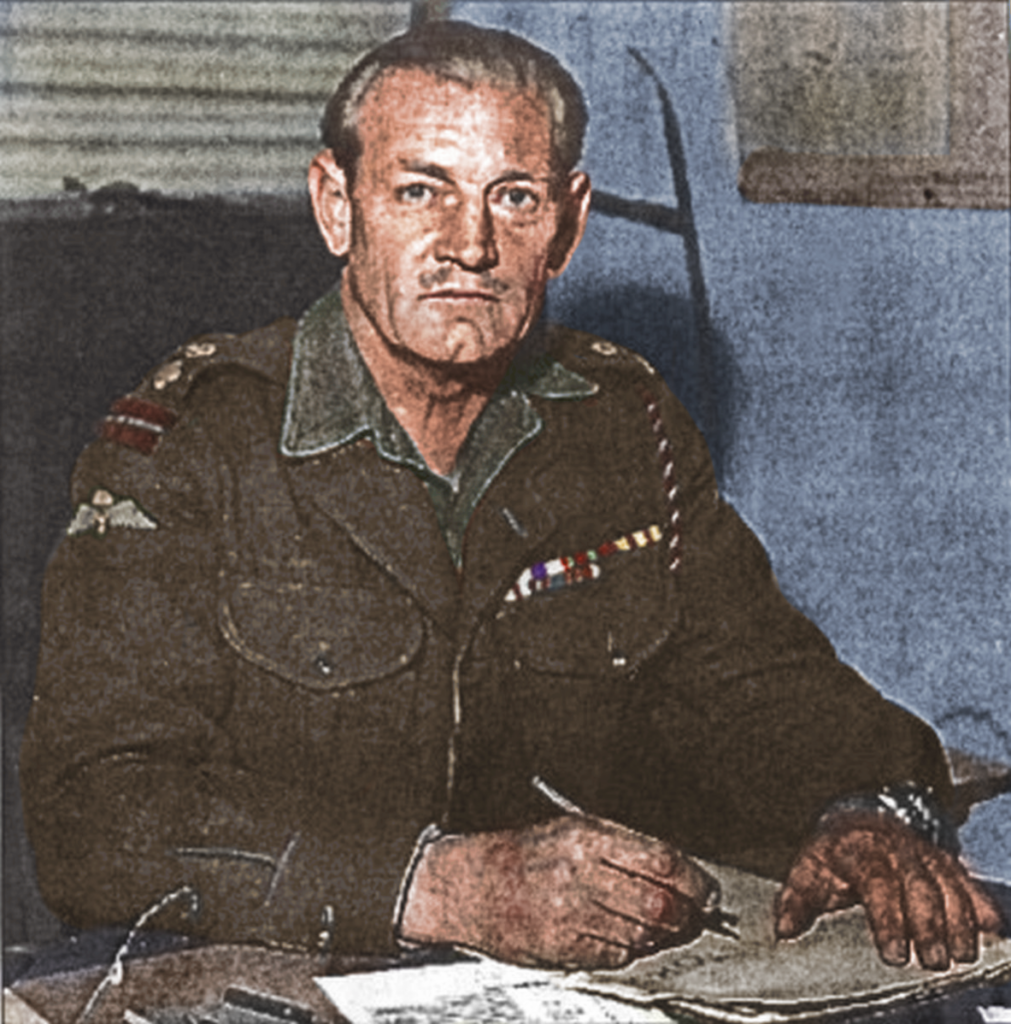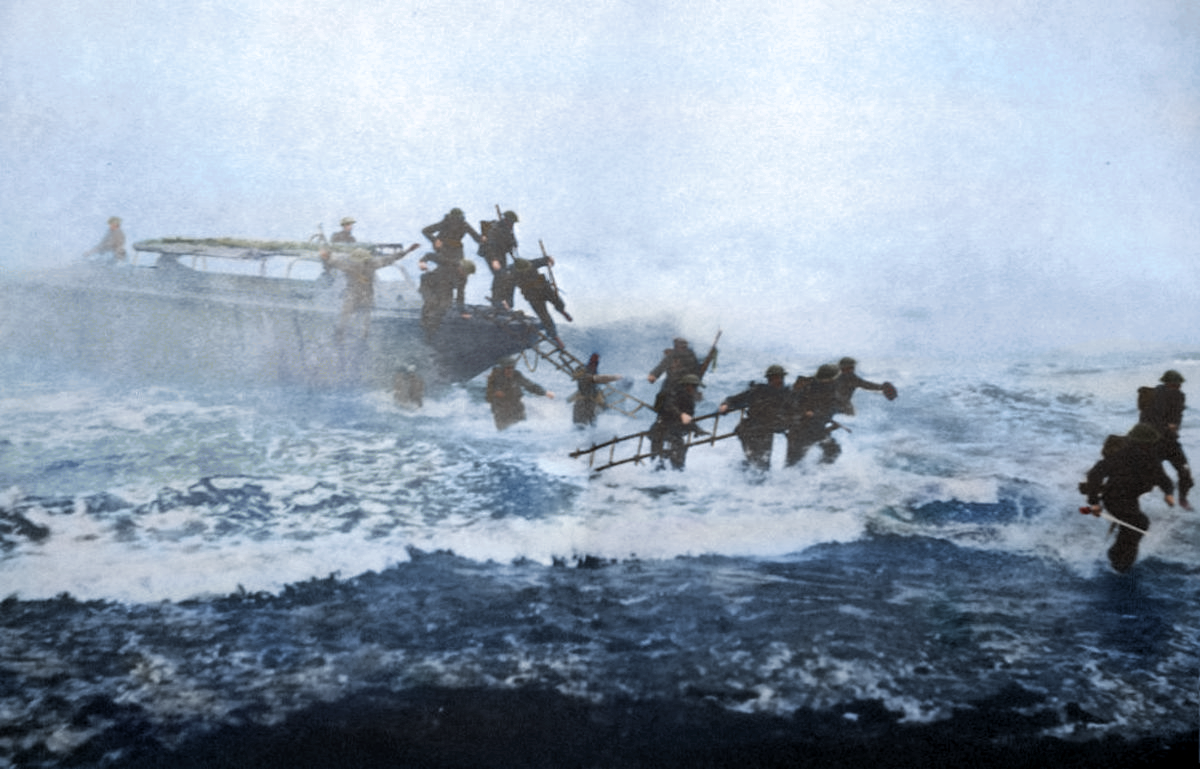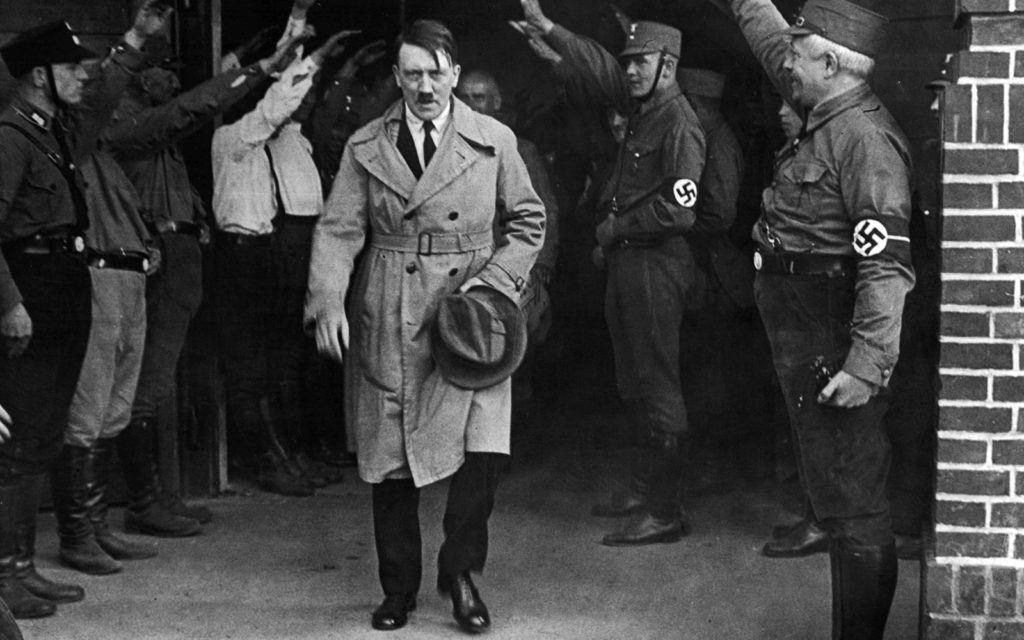In all of military history, there has never been another figure quite like the audacious and eccentric Mad Jack Churchill.
He was a British Commando of World War II acclaim, whose extraordinary exploits have been recounted many times. He was known for charging into battle armed with a longbow, bagpipes blaring, and his resolve never wavering.
From Italy to France, to Norway, and the Middle East, Mad Jack’s victories, escapes, and iconic broadsword became the stuff of legend.
What drove this enigmatic hero to wield ancient weaponry and dance to the tune of his bagpipes amidst the chaos of war? What propelled his unbelievable bravery?
To answer such questions, we must dive into the riveting history of Mad Jack Churchill.

Early Life and Military Background
Jack Churchill was born in Colombo, British Ceylon (modern-day Sri Lanka). He came from a family with a long background connected to the civil service. Both of his brothers – Thomas Bell Lindsay Churchill and Robert Alec Farquhar Churchill – would also achieve military fame.
At just a few years old, the family moved to Hong Kong. They didn’t finally return to England until Jack was around 10 years old.
He attended King William’s College before graduating from the Royal Military Academy, Sandhurst, in 1926. Serving with the Manchester Regiment in Burma, his early military career was, by all accounts, standard and unexciting.
He eventually left the army in 1936. He started working as a newspaper editor in Nairobi and even pursued modeling. Jack’s eccentricities started to emerge around this time, as he began displaying his archery and bagpipe talents in competitions and films.
However, his life took a massive turn in 1940.
Mad Jack Joins the Fighting in World War II
Mad Jack Churchill resumed his military commission when Nazi Germany invaded Poland in 1939. He was assigned to the Manchester Regiment in the British Expeditionary Force. He quickly found himself in a daring encounter during the Battle of France in May 1940.
Leading his men in ambushing a German patrol, Churchill, ever the eccentric, raised his broadsword, signaling the attack – a habit he would grow famous for. Undeterred by the chaos of France, Jack also fought at Dunkirk, after which he volunteered for the Commandos, a unit known for their audacious tactics.
The eccentricity of Mad Jack’s character was immediately evident when he and his bagpipes led the British No. 3 Commando battalion in the audacious Operation Archery on Vågsøy Island, Norway.
To the tune of “March of the Cameron Men,” the opposing Nazis would have witnessed Churchill as he jumped ashore, bagpipes and grenade in hand, before brandishing a full sword and fearlessly charging into the fray.
For his remarkable bravery and valor at Dunkirk and Vågsøy, Churchill was honored with the Military Cross. This cemented his place as an extraordinary and intrepid war hero.
Longbows, Broadswords, and Bagpipes
Renowned for his daring exploits in World War II, Churchill became a unique figure on the battlefield. He wielded an unconventional trio of weapons: a longbow, a Scottish broadsword, and a bagpipe.
He was affectionately called “Fighting Jack Churchill.” He carried his bagpipes everywhere, even amid combat, where he would play martial tunes to the bemusement of his comrades.

In fact, during the invasion of Sicily in July 1943, Churchill led his men into battle with his entire trademark trio in his arms: his iconic broadsword, a longbow and arrows, and his beloved bagpipes.
In the daring maneuver, he infiltrated a German observation post near Molina, capturing 42 prisoners. Undeterred by danger, he led his men and the prisoners down a treacherous pass, with wounded soldiers being transported on carts. His heroic actions at Salerno earned him the Distinguished Service Order.
A man of unwavering determination, Mad Jack Churchill even ventured back to retrieve his lost broadsword after a fierce hand-to-hand combat encounter with a German regiment. There were truly no others like him.
Capture and Escape
After Sicily, Fighting Jack’s story only gets more unbelievable. In 1944, he readied his Commandos in Yugoslavia for a daring attack.
Tragically, most of his comrades fell victim to mortar fire, leaving him as the sole survivor. As the Germans closed in, he defiantly played “Will Ye No Come Back Again?” on his pipes.
He was knocked unconscious and captured. He was then transferred to a compound near the Sachsenhausen concentration camp. But Fighting Jack would not be taken so easily.
Later, in September, Churchill embarked on a daring escape from Sachsenhausen. Alongside three Royal Air Force officers, he utilized a secret tunnel they had meticulously dug.
Despite their efforts, Churchill and an accomplice were apprehended. However, as the war neared its end, his fortunes changed.
In late April 1945, he was transferred under the watch of SS troops. In the frenzy of an encounter with German troops, the prisoners were left unguarded for just a moment. Seizing the opportunity, he and his fellow inmates took off.
Churchill embarked on a 150-kilometer trek to Verona, Italy, where he finally found safety with an American unit.
British Palestine and Evacuating 700 Jews
The Second World War finally ended, but Mad Jack’s story continued. After the war, Churchill served in Palestine, where he was an officer for the 1st Battalion, the Highland Light Infantry.
In the spring of 1948, Churchill found himself embroiled in more conflict. When a medical convoy came under attack by Arab forces, he rushed to assist, offering evacuation. Despite being ordered to stay out of the fight, he and his twelve men provided cover fire against the attacking Arab forces.
Following the harrowing event, Churchill organized the evacuation of 700 Jewish doctors, students, and patients from the Hadassah Hospital in Jerusalem.
Mad Jack Retires
In 1959, Churchill bid farewell to his military career. But even in retirement, he remained the same.
During his daily train rides home, he was known for tossing his briefcase out of the window. He explained that it landed in his own back garden, saving him from carrying it all the way from the station.
Fighting Jack Churchill was the embodiment of audacity, fearlessness, and eccentricity. His unorthodox approach to fighting, with his longbow, bagpipes, and broadsword, set him apart as a captivating and legendary figure.
His daring exploits during World War II, from capturing enemy soldiers with his sword to leading his men into battle with bagpipes blaring, demonstrated his spirit and unwavering resolve.
Today, Mad Jack Churchill remains celebrated as a fearless and unconventional hero.
References
Hay, Mark. “The British Soldier Who Killed Nazis With a Sword and a Longbow.” VICE, May 20, 2014. https://www.vice.com/en/article/yvqbek/the-strange-tale-of-the-british-soldier-who-killed-nazis-with-a-sword-and-a-longbow.
Smith, Robert. “Fighting Jack Churchill Survived a Wartime Odyssey Beyond Compare.” WWII History Magazine, 2005. https://web.archive.org/web/20130917135443/http://www.wwiihistorymagazine.com/2005/july/col-profiles.html.
Smith, Robert. “The Real Story of ‘Mad Jack’ Churchill—a Rare Breed of Warrior.” Warfare History Network. Accessed July 20, 2023. https://warfarehistorynetwork.com/mad-jack-churchill-a-rare-breed-of-warrior/.

